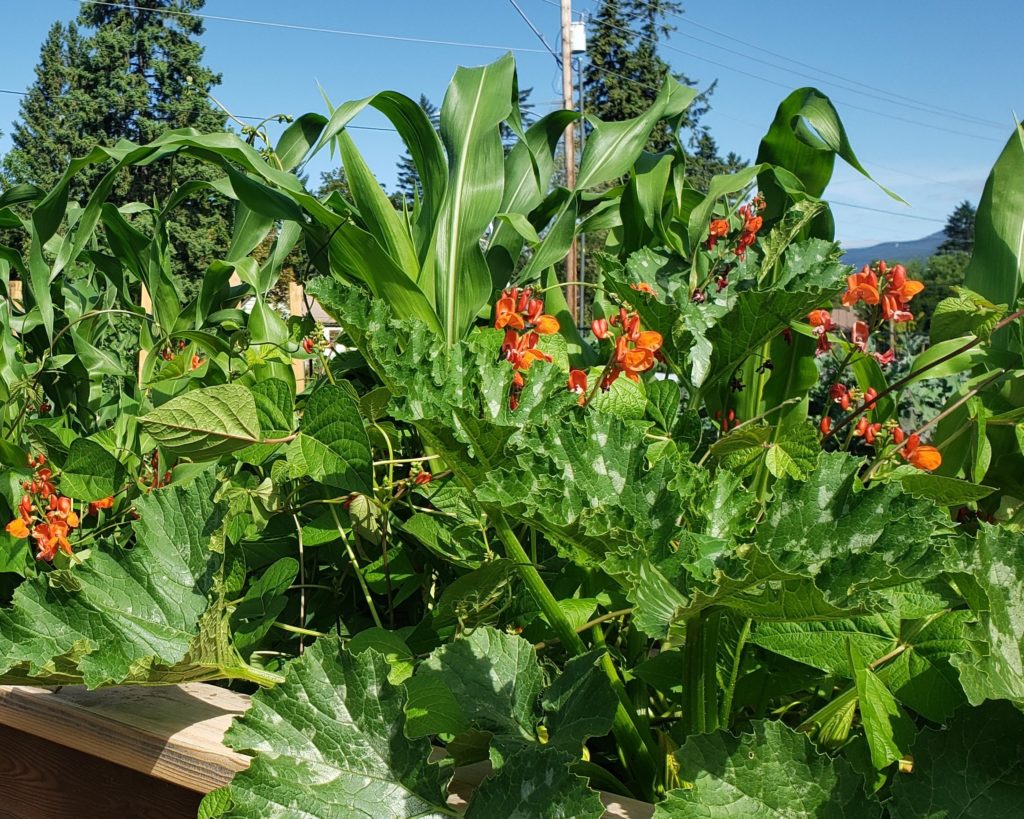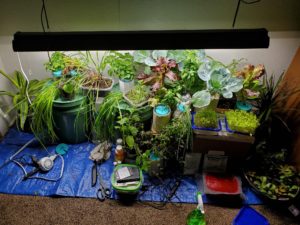by Sammie McGowan
Walking into our garden from the south, the first thing you notice are a few raised beds of what could be perceived as pure chaos. You can see the tops of corn sticking through it all, but there are vines wrapped around their stalks. And at their bases, broad leaves come halfway up the stalk and thick vines cascade over the sides of the raised beds and criss-cross over each other at your feet.
A year ago I would have said, “Who planted this bed? A child?” Being from Illinois, the capitol of corn, I was raised amongst fields of beautifully symmetrical lines of corn. I remember how calming it was to watch the perfect lines of mono-crop through my window as we drove by them at 60 mph, like being in a less chaotic kaleidoscope.
But today, 10 months after beginning my journey with Energy Corps, I look at these beds (which I once would have shook my head in disgust) and see gardening and farming as it should be.
You see, what I’m looking at is a farming technique thousands of years old called the Three Sisters. The Three Sisters is a companion planting technique (traditionally) between corn, beans, and squash that has been practiced by Native Americans all over North America for centuries.
Companion planting is when you plant more than one crop in the same area that help each other grow. When corn, beans, and squash are planted together, they grow even better than if they were planted separately. The corn sprouts first and grows tall, allowing a place for the beans to climb. Beans are a nitrogen fixer, meaning they can take nitrogen from the atmosphere and put it into the soil, enriching the soil for all the plants. The squash’s broad leaves shade the ground around the base of the corn, keeping out weeds and increasing water retention.
Acre by acre, the Three Sisters technique provides more food for a community than if you were to plant the same amount of each plant separately.
When white settlers came to North America and saw Native Americans’ gardens overflowing with the chaos of the Three Sisters, they assumed they didn’t know how to farm, similarly to how I assumed a child had planted our Three Sisters beds. But we have come to know what the Native Americans have known for centuries: that we don’t know everything, and if we listen the plants will teach us the way it should be done.
When I think back to last year when I started my service with Energy Corps, I realize how little I knew compared to what I know now, about gardening, about farming, about food, about the environment in relation to food. Thinking about how I was raised to view farming in the mono-cropped fields of Illinois, it strikes me that this last year has not only been a season of learning, but a season of unlearning.
We all grow up being taught a specific set of beliefs, morals, values, ethics, and ideas about the world, and we go into the world from the standpoint of everything we learned. But what I’m learning over and over again is that some of what we learned isn’t necessarily right or correct or good. And that’s OK, but only if we are open to the fact that we must re-evaluate everything we were taught and come to our own conclusions based on the world we come to know as we grow up. Learning and education is touted as the pinnacle of growth, but I think unlearning can be even more important.








